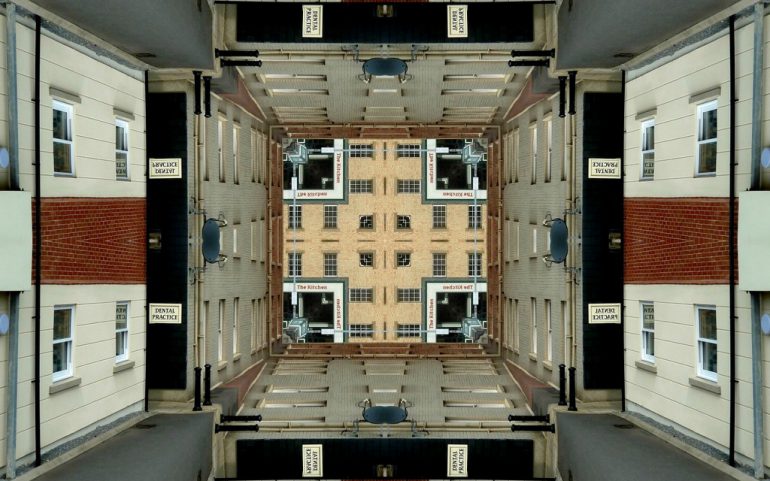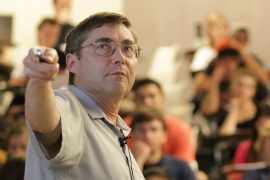The German philosopher Martin Heidegger (1889-1976) said of the work of art, that it is a “setting-forth of earth” and the “setting-up of a world”, in his essay on The Origin of the Work of Art.
When he said the artwork is a “setting-forth of earth”, he was speaking of whatever appears before us in the “visible”, or the appearing, world: whatever the artist has produced. This visible (or “appearing”) aspect of the work of art is what Heidegger calls “earth”.
When he said the artwork is the “setting-up of a world”, he was speaking of the set of possible choices which a human can make which are implied by the artwork wherever it is situated. So, when an artwork is “set up”, wherever it is set up, it implies possible ways in which a human being can organize himself in respect to it. For instance, the setting up of an artwork could imply a human’s attention to it. The setting-up of the statue of Queen Victoria outside the Queen Victoria Building in the Sydney CBD implies some relevance of that statue to the daily concourse of the people who attend the streets where the statue is found. Whatever might be the actions implied by the statue, it seems Heidegger would say that there is a difference between the kind of thing that an artwork is (such as a statue) and the kind of thing that a tile of pavement is (which Heidegger would probably call a “mere thing”), in that the artwork has this weight which causes it to imply possible human choices.
Applications to Teaching
“setting-forth of earth”
Whatever the teacher visibly is or is not, or does or does not do, in presence of his or her students, and in relation to his or her surroundings in presence of his or her students, can fall under Heidegger’s designation of “earth”.
All that the teacher visibly is or is not, or does or does not do, in the presence of his or her students, and in relation to his or her surroundings in the presence of his or her students, is the means of education. Education, in other words, relies and turns upon the production of experiences, or on the setting-forth of earth.
“setting-up of a world”
One aim of teaching always seems necessarily to be to impart knowledge to the student. But what might this mean but to make the student aware of something?
Whatever the teacher is or is not, or does or does not do, sets up a world, that is, it implies choices on the part of the student. Whatever or however the teacher is, implies some possible things to which the students might direct his or her attention, and implies the manner of directing his or her attention. And it also implies some action on what is seen, some use of what is seen.
Effective teaching
Therefore, effective teaching will be such that all that the teacher visibly is or is not, or does or does not do, in presence of his or her students, and in relation to his or her surroundings in presence of his or her students (“earth”), clearly implies what the teacher intends the students to direct their attention to, and in what manner they are to direct their attention to it, and how the things to which they are directing their attention can be made use of.





